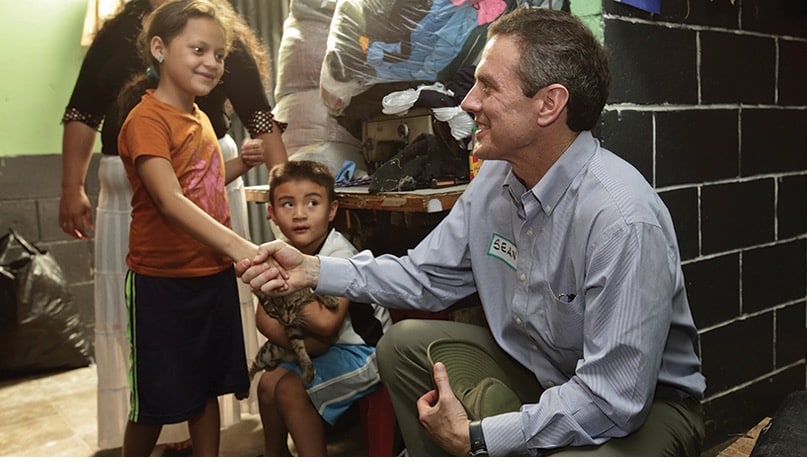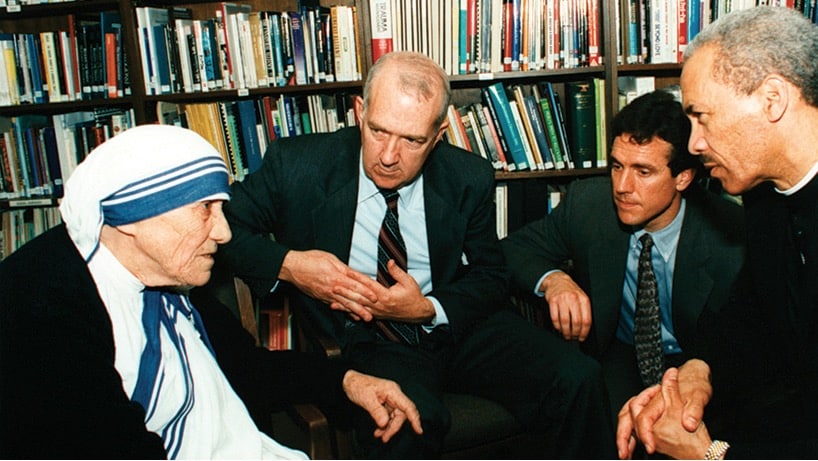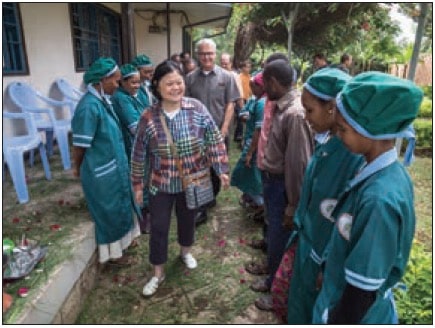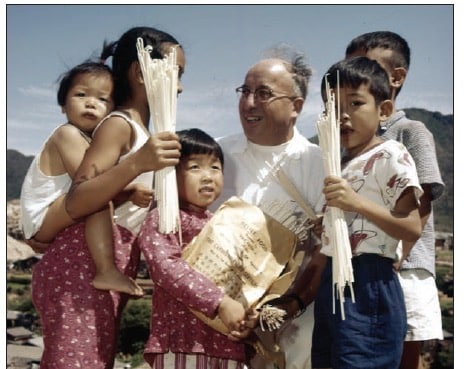
All of these happen on our watch and do a tremendous amount of good, but travel to CRS projects around the world and one of the most powerful scenes you will ever witness will be a bunch of women, maybe gathered in the shade of a tree in a remote village somewhere, taking out three keys and unlocking a box.
This is a meeting of a SILC group — a Savings and Internal Lending Community. What you would witness that day would be proof of the nexus between the simple and the profound — there are few programs CRS operates that are simpler than SILC and which have such profound consequences on participants.
Helping themselves
SILC is essentially a savings club. Anywhere from 15-30 members of a community get together, each agreeing to put in a certain amount of money in that locked box each week. The group then uses the money to make loans to members, collectively deciding on interest rates and repayment schedules.
One member, the treasurer, keeps the box. Three others, known as key-keepers, each have one of the keys. Opening it each week is a community exercise in trust and cooperation.
CRS started SILC about a dozen years ago as a way to help the poorest people have a safe place to save. There were models out there showing that these people at the bottom of the economic pyramid needed savings, not loans. That’s what we gravitated toward when we came up with SILC.
We knew it was a great idea, but we didn’t realize just what we were unleashing. CRS gets the group started and provides technical support for the first cycle — usually about a year. At the end of that cycle, the group returns each member’s savings, splits up the profits from the lending operation and starts again on its own.
It’s amazing to see what these people — most turn out to be women — do when they have a little capital. Maybe they buy a few chickens and start selling eggs. Or buy merchandise and open a small shop. Some use it to tide over during the lean season between harvests so husbands don’t have to travel to the city to look for work — keeping the family together.
But what’s really exciting is to see what happens to the participants, the empowerment that occurs. These are literally the poorest of the poor in already poor countries. When they start with SILC, they are thinking, “I can’t do anything.” Three or four months in, they are thinking, “Maybe I can do something.” And by the time they finish the cycle, they are saying, “Look! I am doing something!”
Even if they have not taken advantage of their ability to borrow money, at the end of the cycle they have money in their hands. It might only be $15 or $16, but they have never had anything like that before.
Maybe in the first cycle, they only saved 25 cents a week. The next one, it’s 50 cents, then $1. That’s very powerful for someone who has never been able to do anything like this before. I’ve worked in these communities for over 40 years and I know the tremendous pride these people have. Certainly, if you are handing things out they will take them, but that’s not what they want. They want to do it themselves. And SILC gives them the hand up they need to do that.
More than an instrument
Often those reaching for the bottom rung of the economic ladder are condemned for their lack of long-term thinking. But the fact is they have never had any reason to think long term as their circumstances meant they could not control anything beyond what was in front of them. SILC gives them that ability, and they prove just as adept at planning ahead as anyone.
From the start, CRS envisioned SILC as a self-sustaining program. Our help usually ends with the first cycle, and the participants almost always go on without us. We started training Private Service Providers (PSP), local people the groups can hire to help run SILC programs. And they do so because they see the investment pays off. The fee-for-service PSPs are paid by the new groups for SILC training in communities that have heard about SILC and want one of their own.
What really puts SILC into the 75-year sweep of the CRS story is how rooted it is in our Catholic values — particularly integral human development. SILC is so much more than a financial instrument. It is even more than a means to empowerment.
Many SILCs are formed by a group of people facing similar challenges — maybe all have been affected by HIV. They save and lend money to help face that challenge financially, but they also support each other emotionally and spiritually.
Others bring together members of feuding groups, who learn to work together and depend on each other, bridging barriers that once seemed too wide to span.
When you see those women take out their three keys and unlock that box, you realize they are opening up something fundamental to everything CRS has tried to do for 75 years — a recognition of the dignity that God has given each and every one of us.
Tom Shaw is Catholic Relief Services’ senior technical advisor for microfinance.




